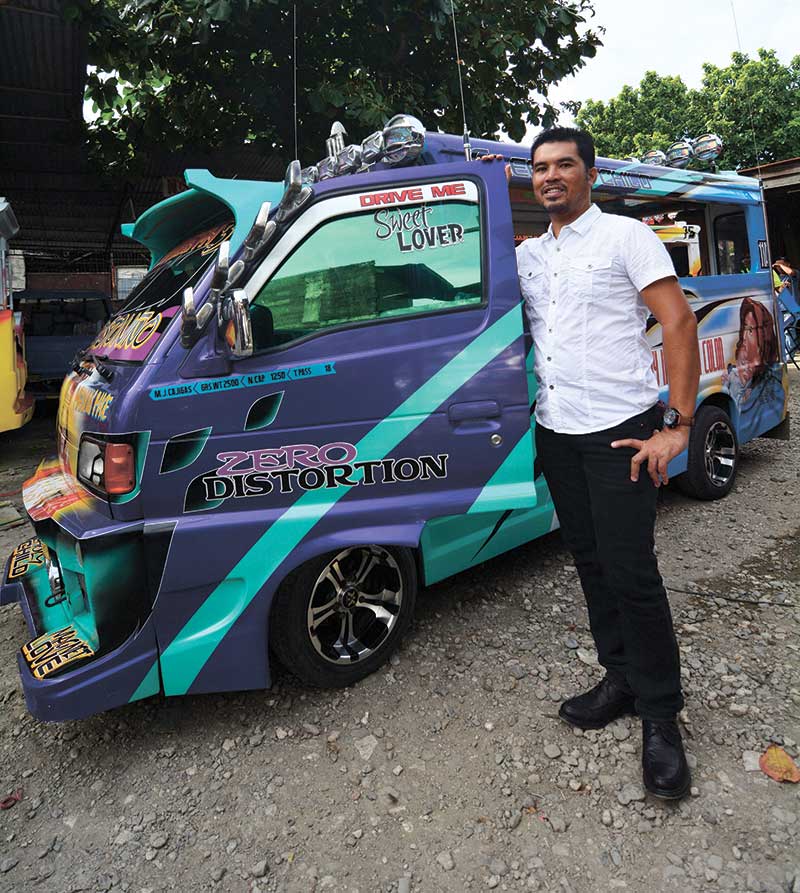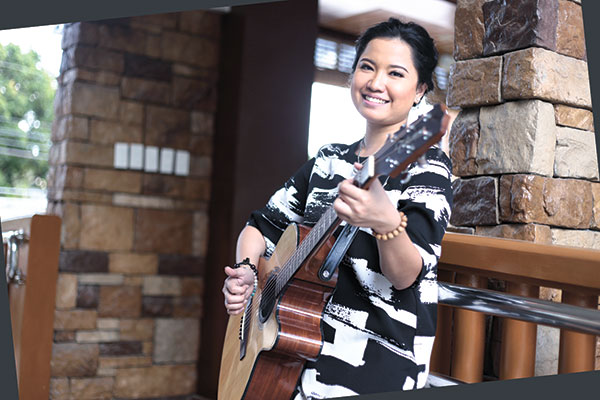Art on the go
Hop aboard a moveable feast for the eyes
Text: Deneb R. Batucan
Images: Amper Campaña
EVERY day, we see them on the streets, brightly colored and packed from end to end. Too preoccupied, we don’t notice the vibrant visual changes they have gone through. Yet one thing is for sure: the ubiquitous jeepneys are constantly evolving as moving cultural art pieces.
The most inexpensive mode of transportation brings flair to the city with eye-catching paintings displayed on all sides. From religious images to cartoon characters, and sometimes even portraits of the owners, these paintings often go unnoticed, but are certified eye candy nevertheless.
Seeing these jeepneys go by every single day, does anyone ever think who does the decorative paintings on it? Who these artists who choose the most mobile of mediums are?
Thanks to various jeepney drivers for their leads, SunStar Weekend chanced upon a local artist who hails from Talisay City. He is known among jeepney drivers who bring his art all around the Cebu. Many jeepneys have his signature imprinted on their vehicle, and probably the common commuter must have noticed a distinct name plastered on the walls of jeepneys.

Locale: Kenstyle Autosales and Repair Shop, Nonoc, Tabunok, Talisay City
That artist is Alekhine “Ken” Bucao, and he owns Kenstyle Autosales and Repair Shop, a business he has built since 2006. Ken has been working as an artist for vehicles since 1993 and has perfected the art of car body painting over the years and passing on the skill to his shop’s small team.
Ken worked in a similar auto shop as his own before Kenstyle was built. As an artist, Ken’s clients usually give him the reigns in terms of the decorative paintings on the jeepneys. Most of what Ken does are shapes and graphics on the sides of the vehicle. These are the cheapest when it comes to labor because it doesn’t take too much time to do.
But if he goes all out, sometimes he paints cartoon characters or portraits of people or anything the clients would request. But Ken usually paints religious images, most common are the patron of Cebu, Santo Nino, and Mother Mary with the baby Jesus.
“Sa ako sad, dako kaayo’g natabang ang Ginoo nako, silbi halad lang pud na nako nga ma pintal sila sa mga sakyanan. Pasalamat lang pud nako nga natabangan ko niya sa akong pag-gama ani ug sa iyang kaluoy, na-uyonan man pud sa mga taw,” he said.
Before he went on painting cars, he also worked on vinyl lettering for public transport vehicles. He learned the art of lettering from a relative’s art shop, where lettering brushwork is done. He would observe and try to mimic how the workers would create the letters, which entailed great attention to detail and a steady hand.
Around the 2000s, after the modern jeepneys emerged, he started doing custom paint jobs for the new jeepneys. He uses acrylic and urethane paint and uses an airbrush to paint on the jeepneys. “Ni uyon man pud ning mga inani nga sakyanan. Attractive siya, ikaw sad nga magpabuhat, maganahan sad ka. Mga pasahero musakay sad kay nindot ang sakyanan, bago, ha-om sa ginatawag nato’g road worthiness,” he said.
The art does give the jeepneys an attractive shell passengers would flock to even with the crowded seating. The colorful and vibrant colors used in Ken’s art is a welcome distraction from the city’s heavy traffic and pollution. But more than that, Ken’s art makes for an interesting addition to our history books as an homage to the past’s flamboyant jeepney decorations.
*****
Jeepneys started to emerge after the end of World War II left hundreds of surplus jeeps that were sold or given to the locals. The jeeps were then stripped down to house more passengers, metal roofs were added for shade and then decorated with vibrant colors all over, as well as with bright chrome hood ornaments.
Today, the modern jeepneys are produced by independent factories all over the Philippines, Cebu included. Euphemistically known as “surplus” trucks, these are built using second-hand Japanese trucks that were intended to haul cargo instead of passengers.






